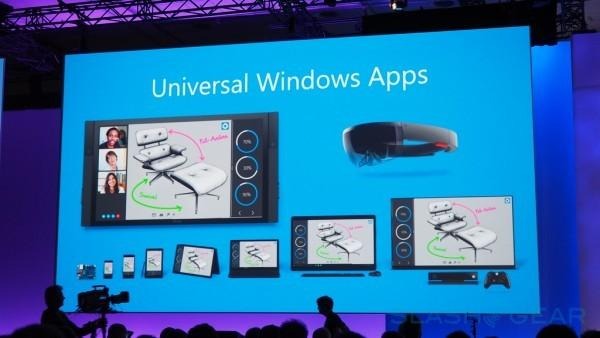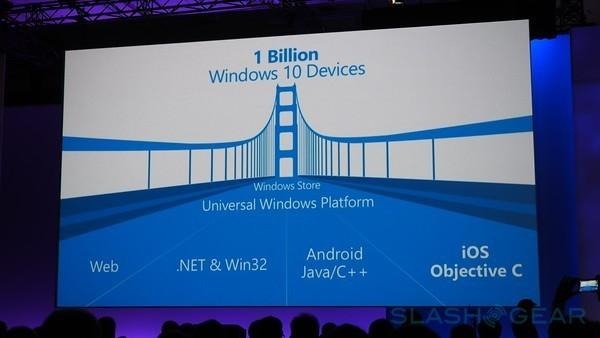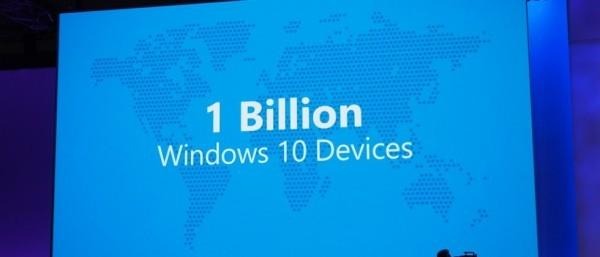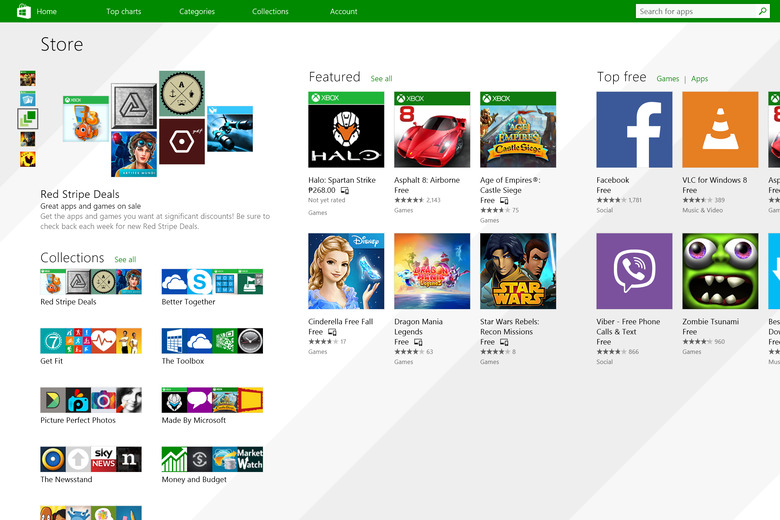Microsoft Needs A New Tune To Woo Developers To Windows 10
"Developers! Developers! Developers!" That chant might trigger nightmares of a rather sweaty Ballmer, but what was true almost a decade ago is now even more critical for Microsoft's success. Yes, success, not just survival. There is little doubt Microsoft could live on for a few more years on life support should Windows 10 flop, but if the next operating system is to become the success that Windows 8 was not, it needs to have more apps. Not just any app, clones or fakes, but the kind of apps that make iOS and Android users go nuts. And to get those apps, Microsoft will obviously need developers, developers, developers.
The Desktop isn't going anywhere
Should Windows 10 be much a disaster as Windows 8 was, it will still survive, though barely. The market for desktop software, especially those that cater to professionals, isn't in danger. At least, not yet. You will most likely see Windows 10 being installed in desktops and laptops in the future, when there is no other choice but Windows 10, but it will be there not because it is a great operating system but because there will be nothing else when you speak of desktops or laptops.
Part of Windows 8 failure was that it muddled the desktop experience in favor of an enforced touch-based, tablet-oriented workflow. Microsoft obviously got the message and Windows 10, particularly the Continuum feature, tries to address that to some degree. Soon you will be able to treat those "Modern" Windows Store apps just like they were regular desktop apps, except they would look a bit out of place when it came to the interface. But now the question becomes why would you opt for these apps in the first place when you have a half a dozen "desktop" alternatives you can use just as well, some of them even offering a better experience.
Windows 10 is trying to solve part of the Windows 8 problem, but that is only the desktop half of its sins. The PC isn't going anywhere yet, but it is changing. Or rather, the traditional idea of what a PC can do, whether desktop or laptop, is slowly but steadily undergoing an unstoppable transition. And whether you like it or not, that transition will eventually land it in the land of "mobile apps", itself a concept that is undergoing a change.
The dearth of Window Store apps
OK, there are a lot of apps currently available on the Windows Store, as well as the Windows Phone Store, but how many of them are official ports of popular apps? How many are even decent approximations of those apps? Suffice it to say, quality is not exactly the Windows Store's greatest strength. But it will be these popular apps, as well as the hidden treasures of lesser known but excellent ones, that will be the litmus test of Windows 10's survivability in the long term.
The next generation of computer users will be more familiar with tablets and smartphones, and Windows has generally done terribly on those. It's not like Windows tablets and smartphones don't have the hardware to stand up against Android and iOS. And criticized as they may be, the interfaces for Windows 8.1 and Windows Phone 8.1 do have shining moments. And yet mobile users continue to flock to iOS and Android by choice on mobile because those are where their apps are.
But why are the apps only there anyway? Well, app don't write themselves, of course, and the bottom line is that developers just aren't that interested in re-writing their app for another platform. Two actually, since Windows and Windows Phone are considered separate.
The Universal promise
Microsoft is trying to address that last bit by introducing the idea of Universal Apps. In theory, this means that any properly written Windows 10 app will work on any supported device, no matter the form factor. There might be a few tweaks needed here and there, but that's the basic premise. That's definitely an enticing idea, being able to cover all Windows 10 versions in one blow. It definitely takes the drudgery out of having to write one version of the app for a desktop, a tablet, and a smartphone. For users, it also means that if an app is available on Windows 10 Mobile, there's a chance it could also be available on a tablet, or vice versa. Android and iOS users will know every well how annoying and inconvenient that dichotomy is.

Universal apps might even be more critical for small Windows 10 tablets, which Microsoft defines as any tablet with a screen size smaller than 8 inches. Though things might change in the future, Microsoft stated that these tablets will not be getting the Continuum experience. In a nutshell, small tablets won't be able to run regular "win32" desktop apps unlike their bigger brethren. They will, instead, be limited to those that can be found in the Windows Store only. This practically puts these tablets back in Windows RT land, along with the blight that plagued it. If the Universal apps promise comes true, owners of these tablets might have little to worry, as the same apps on Windows 10 Mobile, which will not have win32 software as well, could also be available for their small tablets.
But that brings us back to the biggest question: will developers start writing or porting apps to Windows 10? Microsoft may have removed one huge hurdle, but is it enough? Redmond has another candy to bribe developers, and that candy might prove to be poisonous for Windows 10 itself.
Keep your enemies close
Microsoft was once rumored that it would allow Android apps to run on Windows 10, which turned out to be actually half true. It will actually let Android and iOS apps run on Windows 10 Mobile, but it won't be magic. Instead, Microsoft is providing such developers with the tools to retrofit their apps to work on the smartphone version, substituting Microsoft services in place of Android's or iOS'. In short, Microsoft is handing app developers the tools to port their apps from Android or iOS to Windows 10 with very little manual labor involved.
Admittedly, this is a rather ingenious strategy, as it could tempt developers to even just try it out while not completely committing to a Window 10 port of their mobile app. While nothing ever works completely automagically as promised, Microsoft is, at the very least, offering to do most of the heavy lifting involved in getting existing apps onto Windows 10, effectively removing perhaps the highest barrier to entry to the platform.

But this solution brings its own dangers to Windows 10 itself. It is a great way to get the ball rolling, but it should only be the opening stanza in Microsoft's song. Any developer who has had serious apps for both Android and iOS could tell you that it takes more than just switching puzzle pieces to make an app not just work but work great on a platform. Microsoft's strategy runs the risk of developers simply tacking on Windows 10 as an afterthought, given how easy it would be to just convert their existing apps to Windows 10. They might not have enough incentive to treat the platform seriously, and users could end up feeling a bit neglected if the experience ends up being sub par.
Slightly different tunes
Being a late third horse in the race, Microsoft undoubtedly faces a gargantuan task in fighting for developer mindshare. It is taking a few steps forward with Windows 10, but there might be some ways it can do better.
For one, it really needs to play up the Universal spiel, especially to mobile app developers, emphasizing how they could leverage the thousands if not millions of Windows 10 desktop users who may or may not own a tablet or a sophisticated smartphone. Sometimes, a smartphone app on a desktop might not make sense, but it's doubtful that anyone would refuse an official Instagram app on a desktop. Or better yet, games!

Microsoft could also take its embrace of Android and iOS a step further, in a slightly different direction. Instead of just letting developers easily port Android or iOS apps to Windows 10, Microsoft could instead provide a Windows 10 platform that can run on the other two operating systems. Think middleware or game engines like Unity. The difference is subtle, but it involves making Windows 10, or at least Microsoft technology, as the starting point instead of the other way around. Microsoft already has apps on all three platforms, so it definitely has the experience to pull it off. And the new tools for Android and iOS developers hint that they're already half-way there.
Wrap-up
Windows 10's launch is almost upon us, in a few months or even weeks. Analysts are already predicting that its release will have very little bearing on the slumping PC sales, but Windows no longer remains for PCs alone. Whether you are a fan of Microsoft or not, the next version of Windows will still be an event worth keeping an eye on, if only to see if the giant of Silicon Valley can pull itself up and not only remain relevant but also become significant again.

